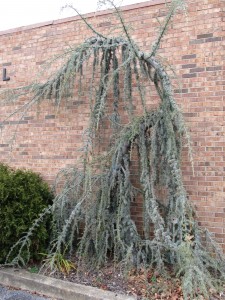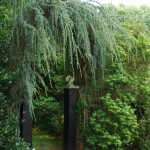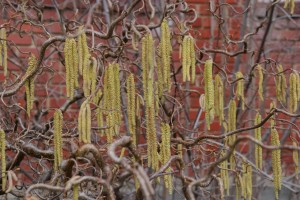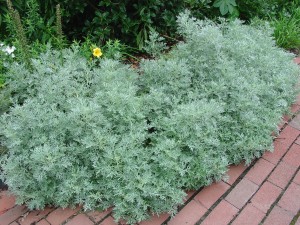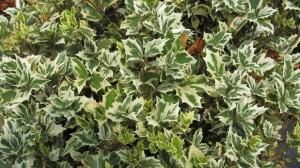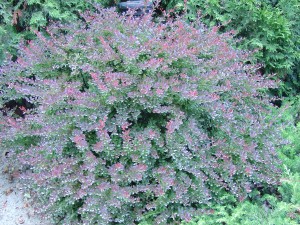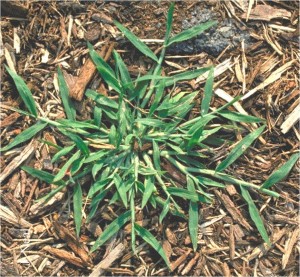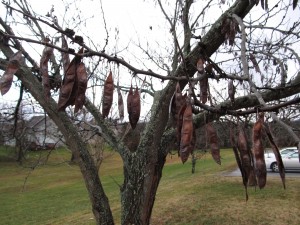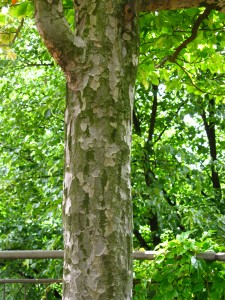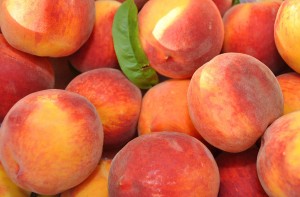Weeping Blue Atlas Cedar (Cedrus atlantica ‘Glauca Pendula’) is “gravity prone”. This strongly weeping tree just doesn’t happen without staking in its formative years. At planting position a sturdy 12-16 foot metal or plastic stake or rod close to the trunk at planting time.
The staking and tying procedure is neither complicated nor time consuming. When the spring growth flush has finished and while the leader is still soft enough (flexible), bend the leader upward and tie to the stake or trellis. Use soft jute or cotton twine, and not wire twist-ems® or plastic ties. After 6-8 months, loosen the ties so they won’t girdle the tender main shoot (leader).
The new shoots emerge in mid to late April. The needles have fully elongated by late May. Staking is best performed anytime from late June thru mid July in the Southern Appalachian region (USDA hardiness zones 6 and 7). The shoots should be slightly hardened but still flexible. If too stiff, the main shoot (leader) may not bend to straighten up vertically and leave a crook.
How many years you continue to stake ‘Pendula’ depends on the mature height desired. Most gardeners train to 5-8 feet, but I encourage you to set a higher goal between 12-16 feet.
Another idea is to train Blue Atlas cedar to an arbor or trellis at a garden entry (see photo below).
Staking when young provides an early foundation for a well-shaped mature tree. Plants can be alot like people. Youngsters left to their own devices become unruly adults.

